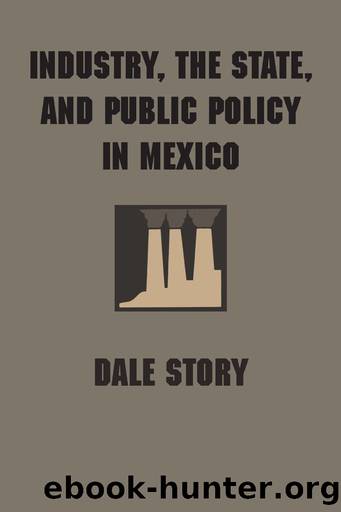Industry, the State, and Public Policy in Mexico by Unknown

Author:Unknown
Language: eng
Format: epub
Publisher: University of Texas Press
Published: 1986-08-15T00:00:00+00:00
7. Industrial Development Strategies and Petroleum Policy
The prominence, importance, and influence of the industrial sector were especially heightened during the presidency of José López Portillo. He came to power in 1976 after the tumultuous years of the EcheverrÃa sexenio. The latterâs term ended in near chaos with the sudden devaluations of the peso, the shocking expropriations of rich farmland in the Northwest, the near total alienation of the private sector, and genuine concern about the stability of the presidential succession. But López Portillo did assume the presidential sash as planned on 1 December 1976 and quickly displayed his determination to restore political calm and to reassure business leaders about their role. In his inaugural address he unveiled his commitment to a new direction through his âAlliance for Productionâ when he pledged âan unremitting democratic effort to change existing circumstances, even the most difficult of them.â He further stated that he would âstimulate the dynamic, effective collaboration of every sectorâ and would guarantee âthe legitimate expectations of businessmen.â1
Despite some setbacks, the industrial sector generally prospered over the next five years, as López Portillo showed that he was a trusted friend of the private sector. Only in his last year, when the economic crisis hit Mexico and López Portillo reacted with devaluations, bank nationalization, and exchange controls, was this harmonious relationship destroyed. De la Madrid then not only faced the task of restoring private sector confidence after another unstable pre-inauguration year, but also confronted the difficulties of the worst economic crisis in decades.
âShared Developmentâ versus the âAlliance for Productionâ
No strong indications before his inauguration pointed to any significant changes that might occur under López Portillo. As is always the case in Mexican politics, EcheverrÃa had personally chosen his successor after weighing the political pros and cons of the leading candidates. In September 1975 EcheverrÃa made the surprising selection of López Portillo, who was generally not considered one of the most likely tapados (presidential contenders). A lifelong friend of EcheverrÃa, López Portillo had served admirably as treasury secretary since 1973. But his greatest shortcoming was that as a técnico he lacked a strong political base. Of course, some have argued that this lack of political connections was an asset in the eyes of EcheverrÃa, who wanted to continue wielding influence after his term of office (Smith 1979:288â292). At any rate, the two men were close associates and EcheverrÃa did hand-pick his successor. Thus, one could reasonably have expected a continuation of policies after the inauguration. But this was not to be. On assuming office, López Portillo immediately set out to âbe his own man,â and many of his policies, particularly those in the economic sphere, were quite different from those of his predecessor.
More than any other president, EcheverrÃa tried to emulate the populist style, rhetoric, and policies of Lázaro Cárdenas, the leftist president in the 1930s. As was the case with López Portillo, there were no indications of his plans when he came to office in 1976 to succeed the conservative DÃaz Ordaz.
Download
This site does not store any files on its server. We only index and link to content provided by other sites. Please contact the content providers to delete copyright contents if any and email us, we'll remove relevant links or contents immediately.
| Arms Control | Diplomacy |
| Security | Trades & Tariffs |
| Treaties | African |
| Asian | Australian & Oceanian |
| Canadian | Caribbean & Latin American |
| European | Middle Eastern |
| Russian & Former Soviet Union |
The Secret History by Donna Tartt(18803)
The Social Justice Warrior Handbook by Lisa De Pasquale(12125)
Thirteen Reasons Why by Jay Asher(8765)
This Is How You Lose Her by Junot Diaz(6758)
Weapons of Math Destruction by Cathy O'Neil(6116)
Zero to One by Peter Thiel(5657)
Beartown by Fredrik Backman(5574)
The Myth of the Strong Leader by Archie Brown(5400)
The Fire Next Time by James Baldwin(5221)
How Democracies Die by Steven Levitsky & Daniel Ziblatt(5110)
Promise Me, Dad by Joe Biden(5074)
Stone's Rules by Roger Stone(5011)
100 Deadly Skills by Clint Emerson(4823)
A Higher Loyalty: Truth, Lies, and Leadership by James Comey(4820)
Rise and Kill First by Ronen Bergman(4680)
Secrecy World by Jake Bernstein(4616)
The David Icke Guide to the Global Conspiracy (and how to end it) by David Icke(4602)
The Farm by Tom Rob Smith(4419)
The Doomsday Machine by Daniel Ellsberg(4395)
